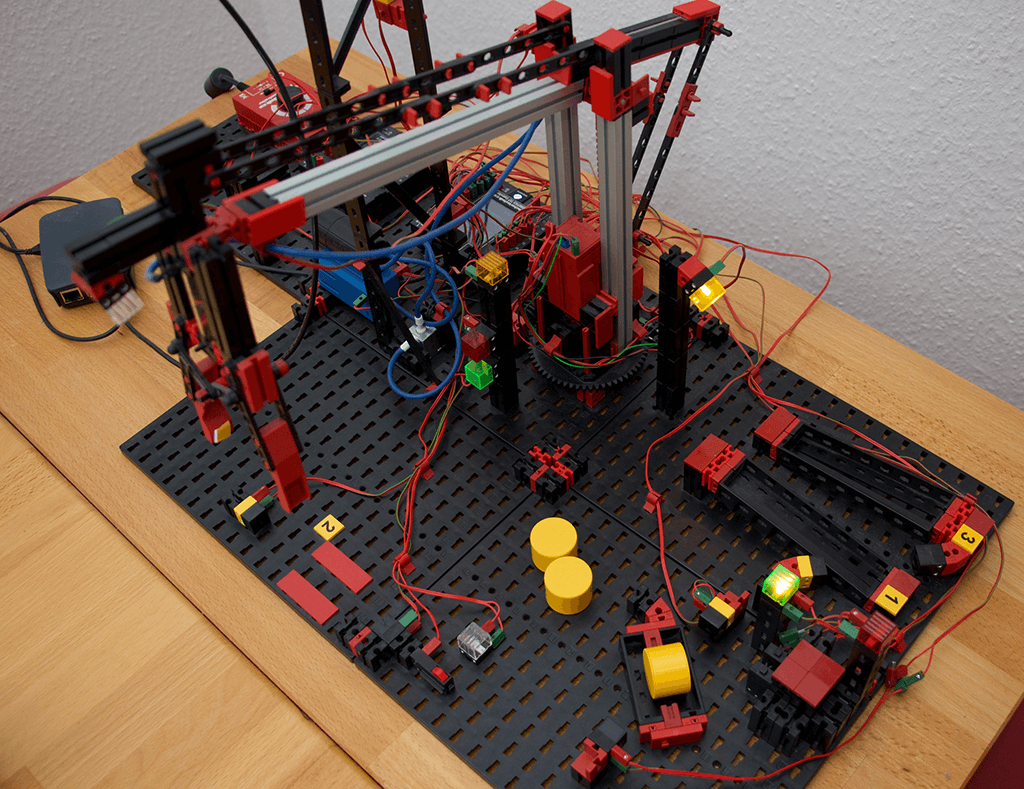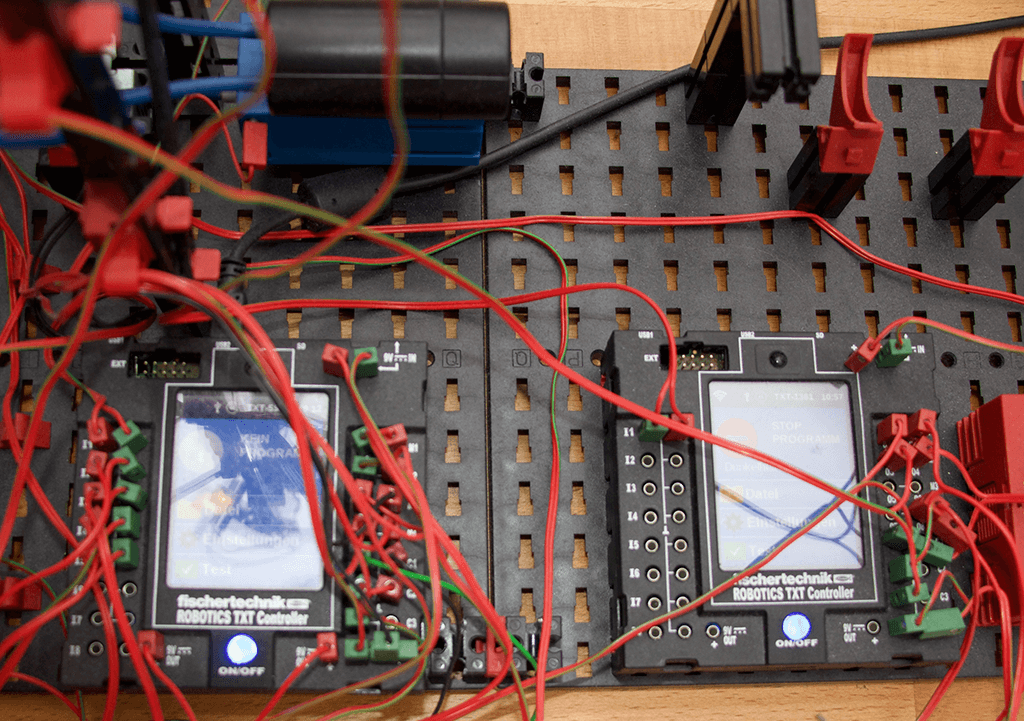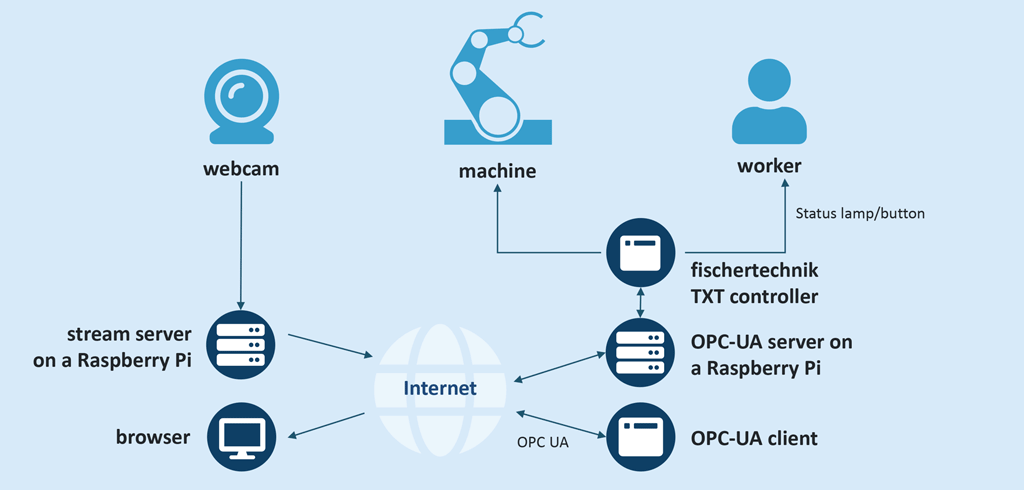Showing the invisible: Using Fischertechnik Models to Make the Integration of Industrial Processes Visible

In contrast to the majority of applications, software used in data integration often doesn’t have a nice, intuitive user interface, rather tends to work silently and invisibly behind the scenes. This doesn’t bother seasoned users, but does mean that people who aren’t ʽin the knowʼ find it difficult to get to grips with data integration topics. However, for data integration in industrial processes, using fischertechnik or Lego to make working models can make complex, abstract concepts visible and tangible. This approach has further interesting advantages, as can be seen in this blog post.
KoKoMo Research Project
This approach has also been used in the research project KoKoMo, the results of which have been showcased in a SEEBURGER blog series, ending with this post.
Working models of collaborative assembly
In collaborative assembly, the human machine interface (HMI) plays a special role both in regard to hardware and software. Using a simplified fischertechnik model such as in figure 1, can make basic elements of a human robot collaboration tangible. The two axis robot with a pneumatic grabber arm can take components (the yellow cylinders) from a store to the workstation, hold them in place while they are being worked on, and then put them back. The photocells used to locate the components are the sensors being integrated. The interface between the robot and the worker is reduced to a minimum, consisting of a status lamp for the robot and a physical button which the worker presses to confirm that machining has been completed. This mini manufacturing facility is controlled by two fischertechnik robotics TXT controllers, which behave like the programmable logic controllers (PLC) found in a real factory.
 Figure 1: Using a simple Fischertechnik model to show basic elements in a human-robot collaboration
Figure 1: Using a simple Fischertechnik model to show basic elements in a human-robot collaborationRunning integration software on an OPC-UA set-up
The controllers (see figure 2) have a number of interfaces including Bluetooth and infrared, and the largely free structure of their linux-based systems offers you many more possibilities. As the reason behind building this working model was to try out real industrial protocols, it also has a raspberry pi connected which, together with the Python module ftrobopy, allows the Python code for the robot to run on the fischertechnik robotics TXT controllers.
 Figure 2: A controller with several interfaces, including Bluetooth and infrared
Figure 2: A controller with several interfaces, including Bluetooth and infraredThe main component of this integration solution is a Milo based OPC-UA server. As a result, this whole set-up can be controlled via OPC UA and can enjoy the benefits of this standard, including the integrated security features. These include a guaranteed end-to-end connection to the manufacturing servic bus as well as monitoring options for the connection to OPC-UA server. The video stream from the camera attached to this fischertechnik model can also be used for monitoring purposes. Figure 3 shows a simple diagram of the information architecture of our set-up.
 Figure 3: Information architecture of a mini OPC UA setup for collaborative assembly
Figure 3: Information architecture of a mini OPC UA setup for collaborative assemblyManufacturing service bus and monitoring
With the help of its OPC UA adapter, the SEEBURGER Business Integration Suite takes on the role of the manufacturing service bus. In true industry 4.0 style, jobs can be sent to our working model from other systems in the company. From the other side, the full status of our mini system can be monitered and evaluated almost in real time by directly or indirectly accessing the OPC-UA server. The wealth of possibilities offered here are set out in the article Industrial Data Integration – Aggregation and logging of industrial process data by integration of heterogeneous data streams.
What’s the point of a working model?
The sooner a problem is discovered during development, the less likely it is to derail the entire project. As well as using the current approaches such as simulation, building miniature working models such as the one showcased here can making an important contribution. They would also be beneficial for trade fairs and similar. A particularly interesting area would be the possibilities such a working model would offer in education, including in degree courses and specialist corporate training. Considering that there are currently around 80,000 unfilled engineer positions in Germany, Fischertechnik and Lego robotics systems could also help get children and young people excited about technology and give them their first taste of the world of programming and software development.
Incidentally, the author’s 12 year old son made a not insignificant contribution to the iterative development of this Fischertechnik demonstration model, having a lot of fun in the process.
Further information
d1g1tal AGENDA No. 10 2019/2, pages 18-21: Simulating – fischertechnik
Source: https://blog.seeburger.com/showing-the-invisible-using-fischertechnik-models-to-make-the-integration-of-industrial-processes-visible/
 industry-trend6.com
industry-trend6.com
